Overview
- Intact.Simulation’s meshless workflow allows for the automation of simulation and parametric design in one cohesive loop by eliminating pre-processing barriers between design and simulation.
- By sampling simulation results at points of interest, Intact.Simulation can readily inform design changes at a localized level rather than simply utilizing global-level information, resulting in more customized and efficient designs.
Localized Simulation-Driven Sizing
Localized design changes can leverage part-specific characteristics creating lighter, more optimized parts for their use case. Further, integrating simulation-driven feedback can help target important load scenarios or design requirements. Combining these two in an automated loop with Intact.Simulation enables rapid localized design iterations to any part-specific design parameter. For example, given an isogrid stiffened panel, a typical approach would be to change size parameters like depth and spacing globally. Instead, the geometry and loading conditions can inform selective reinforcement of regions that require additional stiffening thereby enabling designers to achieve their design goal with more weight savings for high-performance applications.
This example is demonstrated in the following workflow which begins with sampling von Mies stress distributions on the initial isogrid plate at each triangle center (fig 1) and ends at a final design with locally variable stiffener sizing for depth and strut thickness (fig.2). Importantly, this final design meets the application’s design target of maintaining a 1st elastic mode above a set threshold frequency.
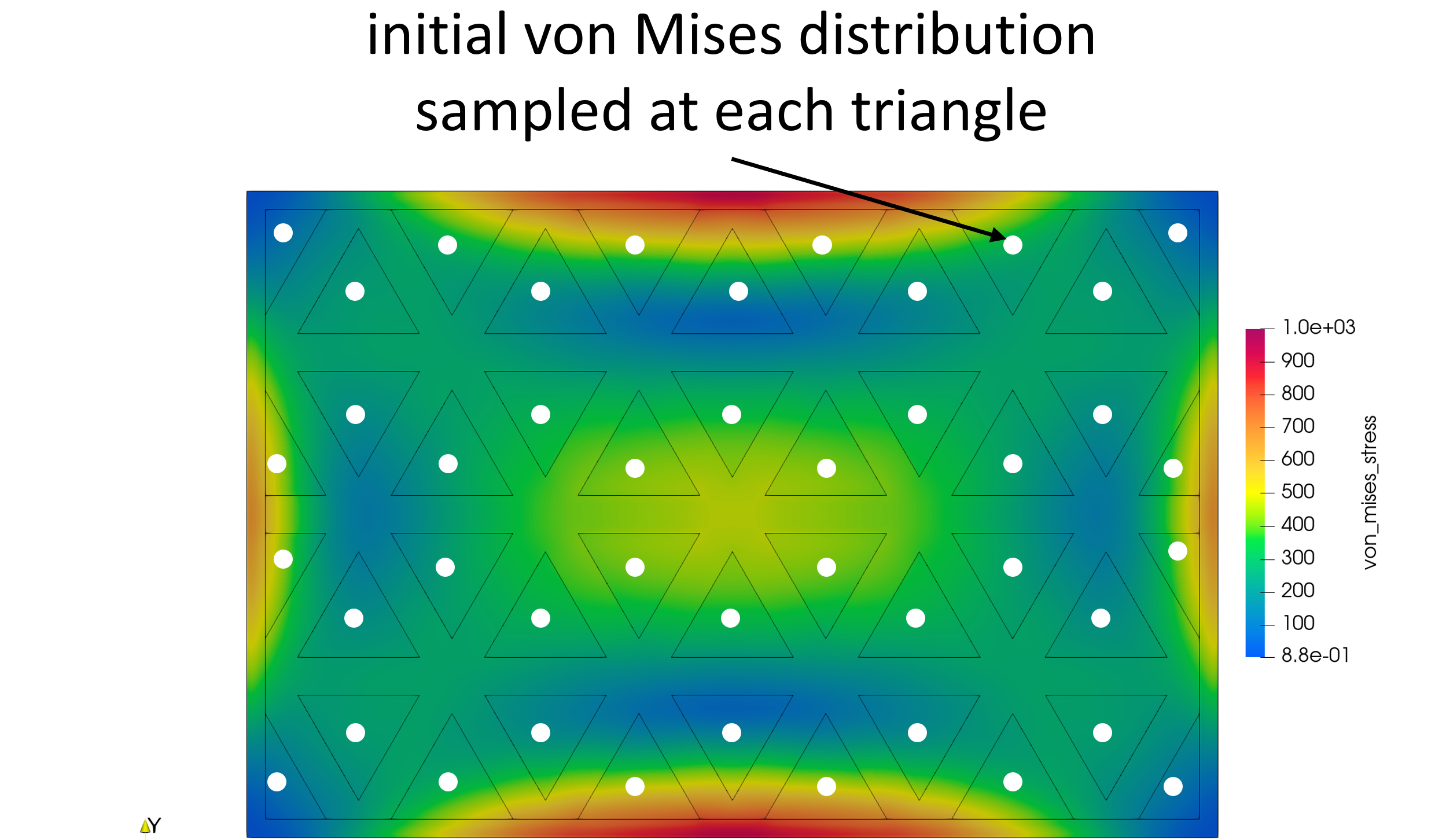
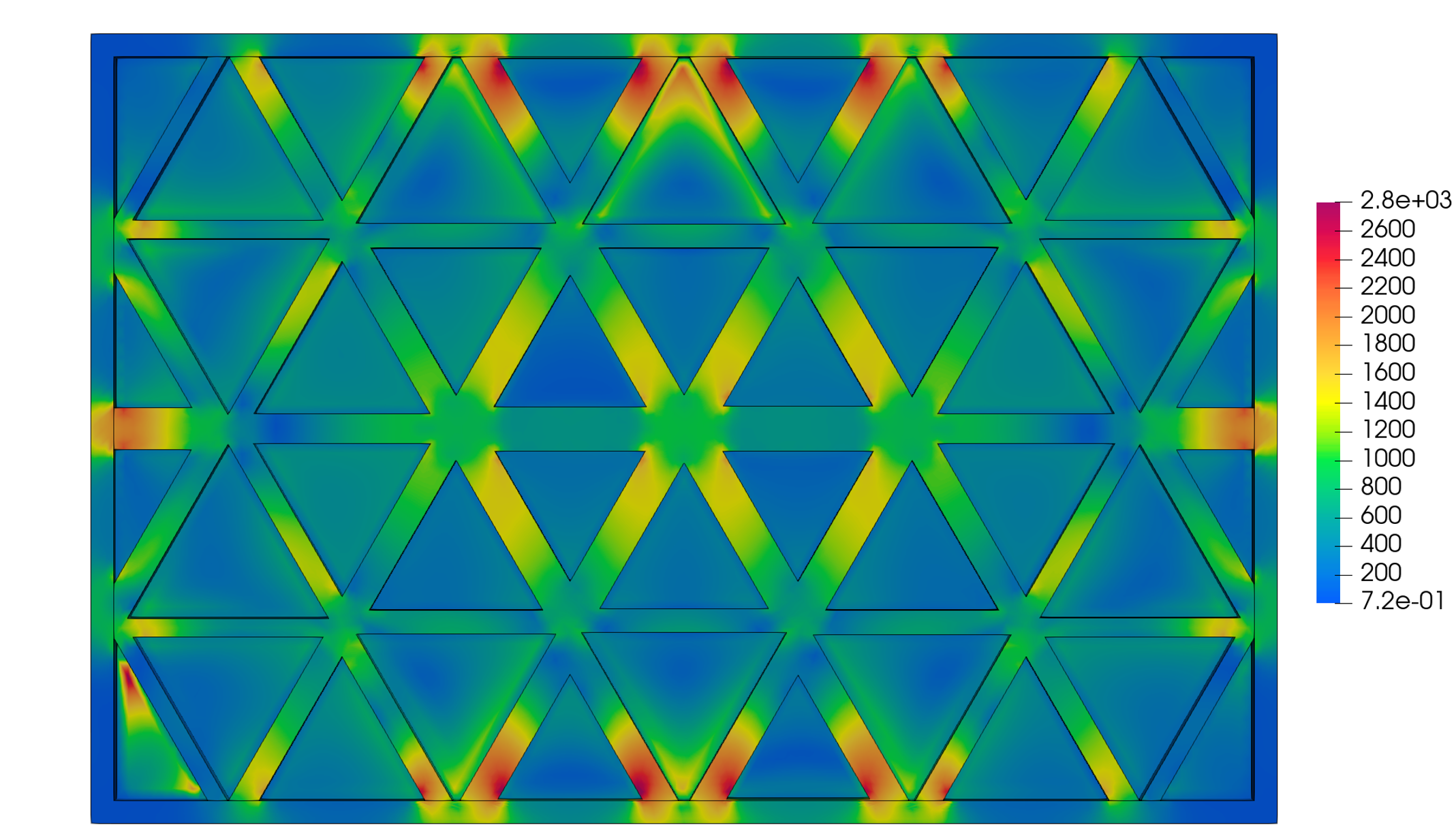
After sampling the initial von Mises stress distribution, we enter the automated workflow loop in Grasshopper. As an initialization step, the loop takes in the initial von Mises stress values at each point in Figure 1. These are then mapped to a chosen range of values corresponding to each point’s triangle offset distance (spar thickness) and extrusion depth. Specifically, points with large stress quantities map to small offset distances/extrusion depths for the corresponding triangles. On the other hand, points with smaller stress quantities are mapped to larger offset and extrusion depths – or larger design changes. This process then repeats in the automated loop from the new re-mapped design which is simulated and sampled to inform the next design iteration. Of note, there are two simulation scenarios: the linear elastic scenario to sample stress and a modal analysis scenario to check if the design meets the frequency threshold requirements. These three core steps, fig 3, of design change, followed by simulation, and then stress sampling/mapping continue iteratively until the desired design is reached.
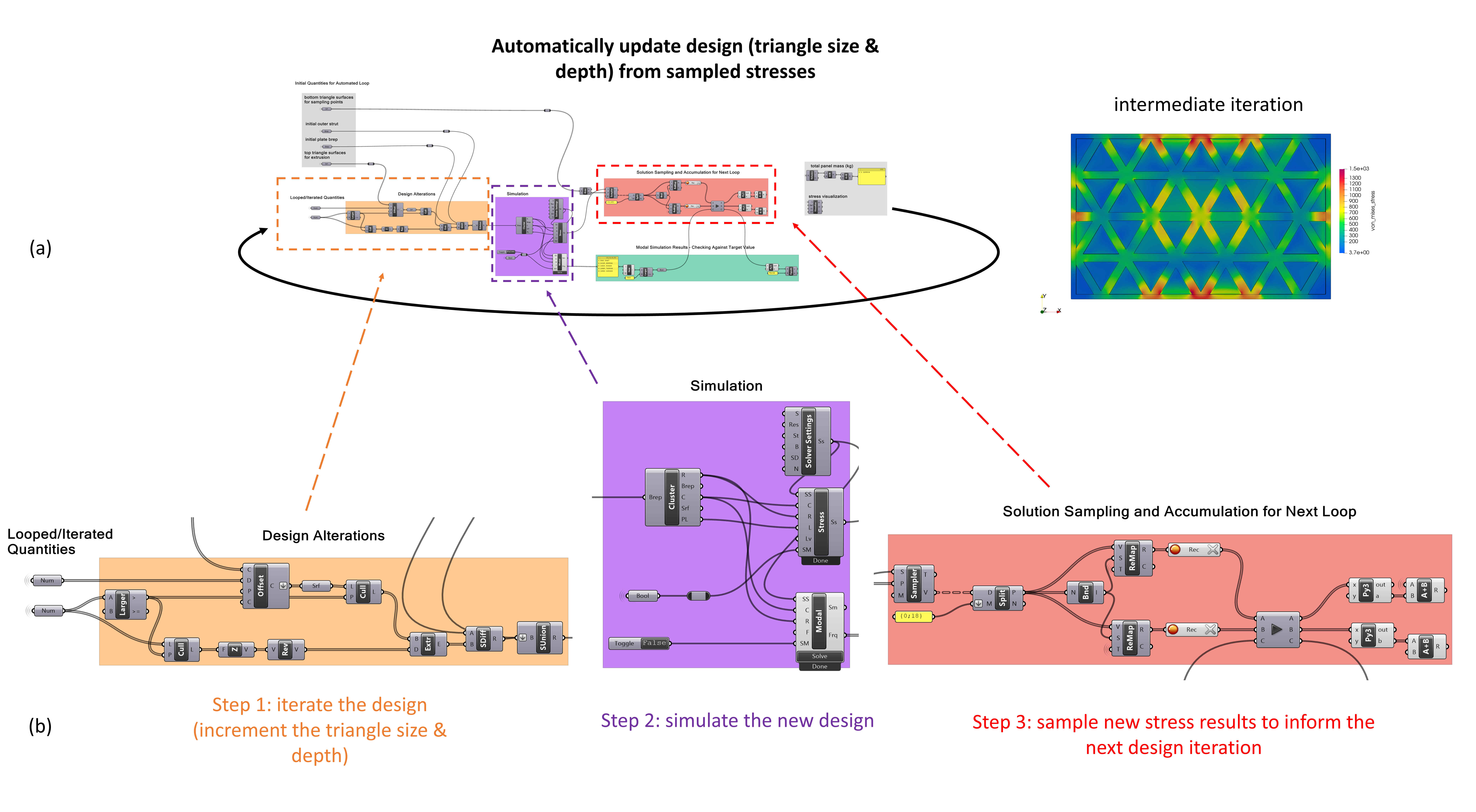
By simulating the modal scenario alongside the linear elastic scenario to get the von Mises stress, the design target of the 1st elastic mode can be checked for each iteration. After going through intermediate iterations, the final iteration is reached which has minimized mass via its locally variable sizing while still maintaining a 1st elastic mode above the specified threshold, fig 3.
To create local changes optimally, as shown above, an integrated design and simulation workflow is a must. However, traditional mesh-based FEA tools often break the design iteration workflow because of bottlenecks such as meshing and representation conversion, that are time-consuming and/or require considerable manual effort between design tuning and simulation.
 Intact.Simulation for Rhino Grasshopper makes rapid automated design iterations possible.
Intact.Simulation for Rhino Grasshopper makes rapid automated design iterations possible.
Predicting how to tune a design’s parameters is incredibly simple using Intact.Simulation. Intact uses Immersed Method of Moments (IMM) technology which, put simply, eliminates defeaturing, representation conversion, and meshing from the loop enabling rapid and effortless design iterations. When ready for validation, a high-fidelity model for the finalized part can be simulated by the same workflow without additional preprocessing.
Example Design Study: Local Mass Reduction of a Housing Panel
Mass savings often directly translate to cost savings and can also be critical to performance depending on the application, such as automotive parts. In this study an overdesigned housing panel is investigated by locally removing material based on simulation feedback to reduce mass while retaining stiffness where possible, fig 4. Specifically, the part should retain a 1st elastic mode above 1800 Hz which has a proportional relationship to its stiffness and an inversely proportional relationship to its mass.
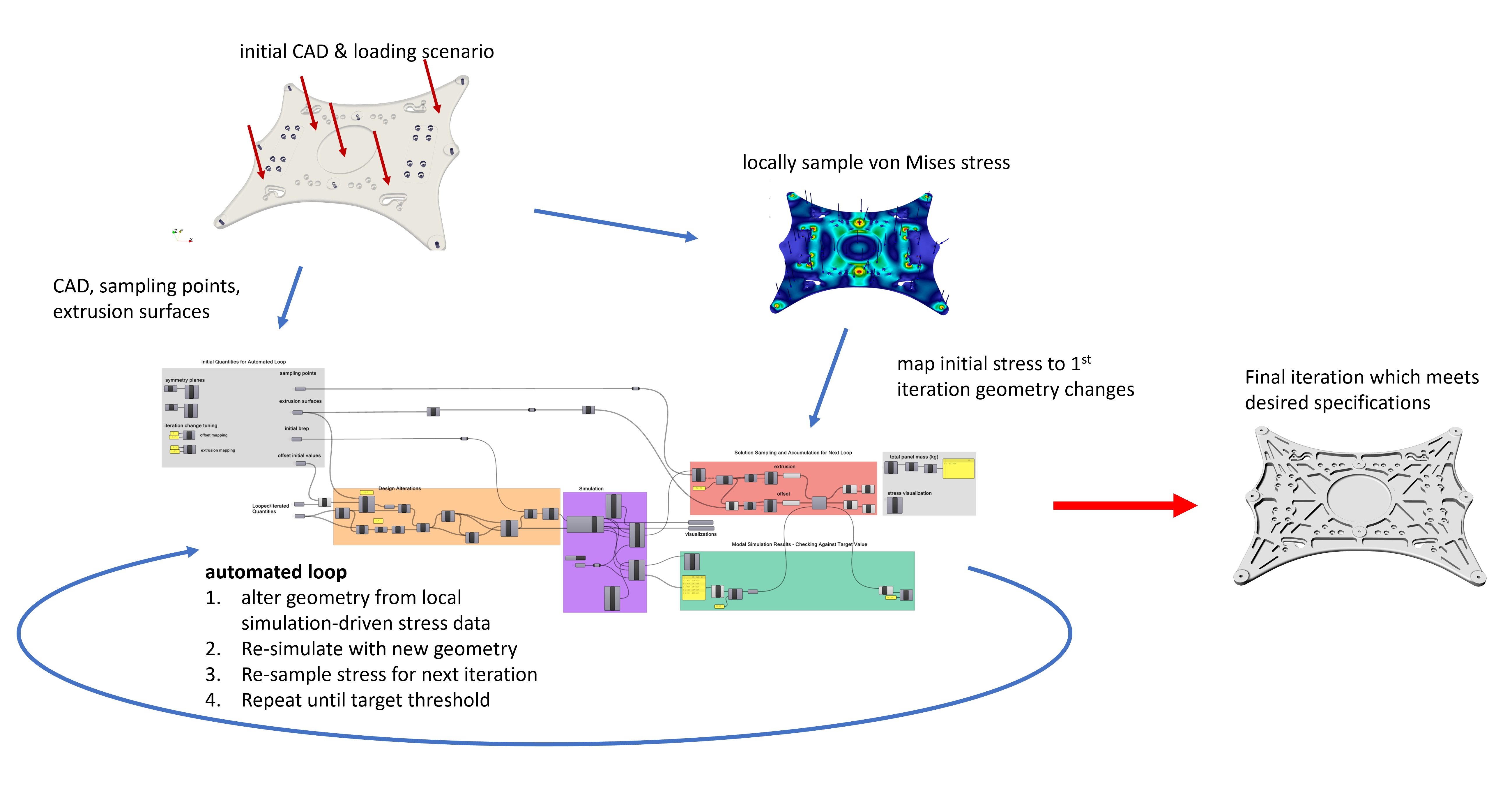
To start, the initial housing panel is loaded with uniform pressure and restrained at various holes. From this load case, the von Mises stress distribution is sampled at points near areas where parametric design changes occur. In this case, those areas correspond to where the specified extrusion surfaces are to remove material without interfering with any holes or other essential design aspects. This is used to inform how much material to take away, with low-stress areas indicating more material can be removed and high-stress areas indicating the material should be removed minimally or not at all. Finally, the new design’s stress is resampled to inform the next iteration of material removal in an automated loop until the desired outcome is achieved, fig 5.
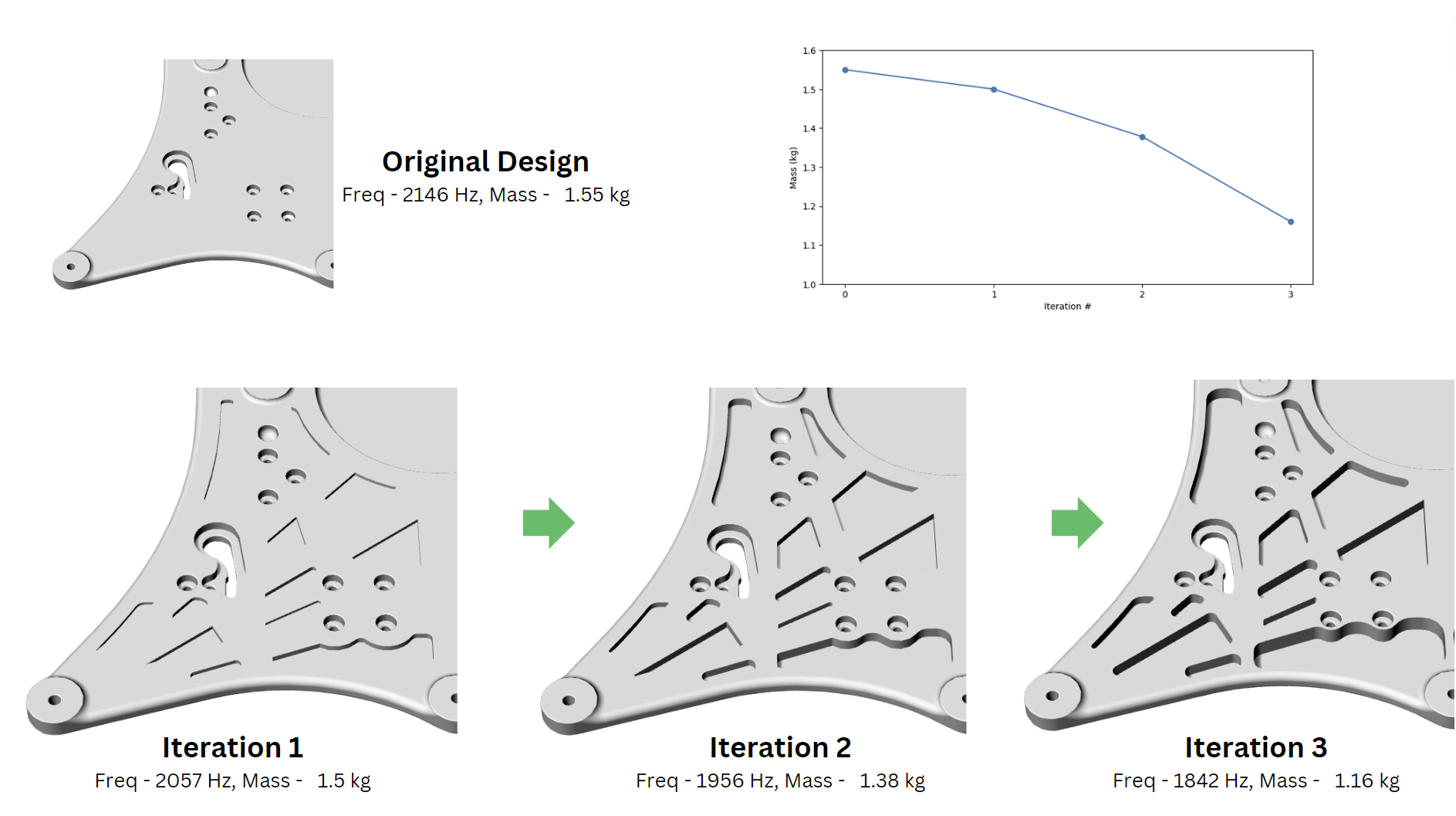
It can be seen from this that the cutting extrusion increases varyingly in area and depth at each iteration as determined by the sampled stress fields. The final iteration has a mass of 1.16 kg while maintaining a 1st elastic mode above the target frequency of 1800 Hz, yielding a 25% mass decrease with the desired performance. Next, the localized simulation-driven design is compared against the naive approach of cutting by a uniform extrusion depth throughout the housing, fig 6.
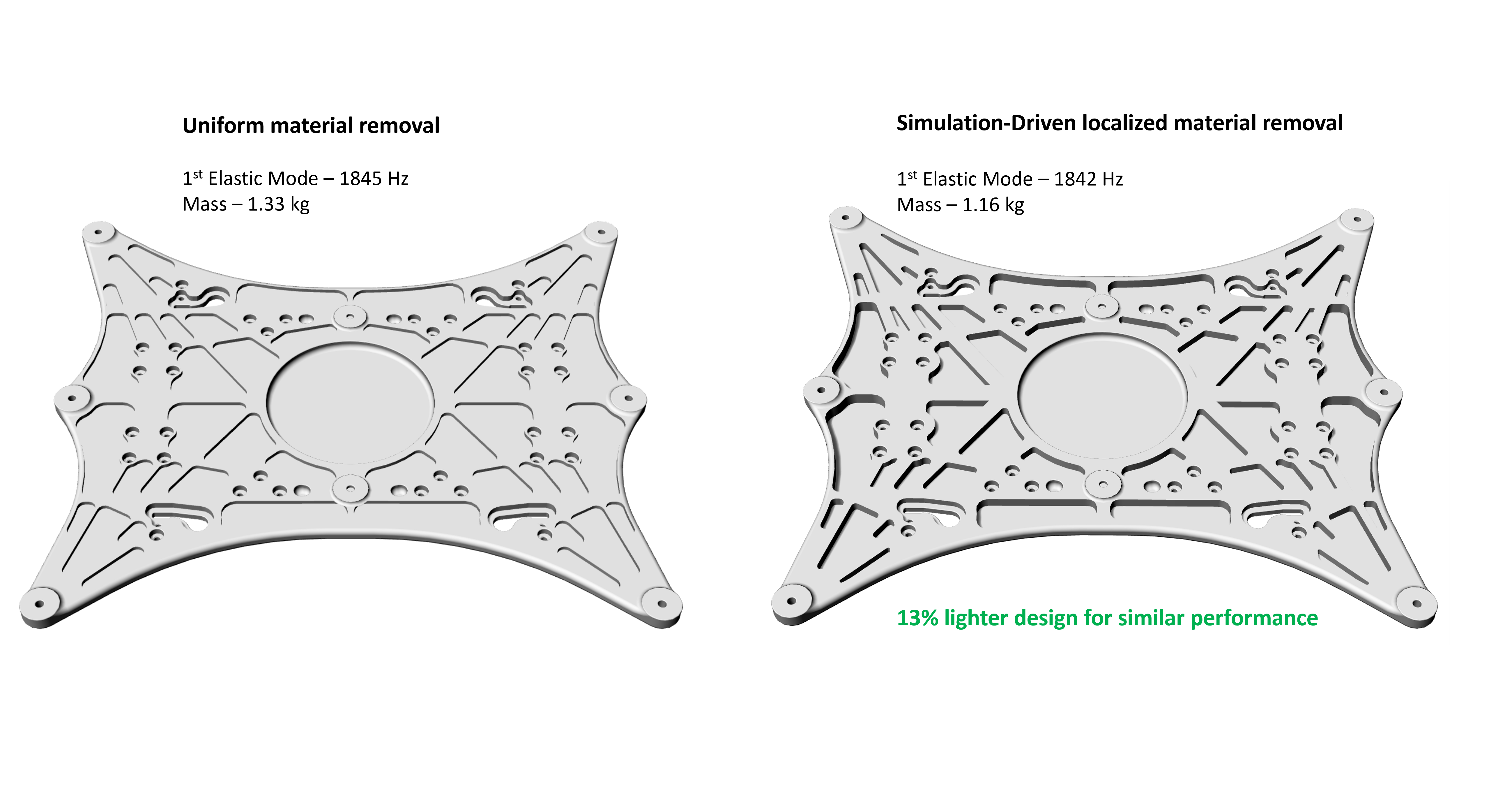
The naive approach of uniform extrusion depth with the 1st mode near the target frequency has a mass of 1.33 kg while the simulation-driven iterations at a similar 1st mode is 1.16 kg showing that the simulation-driven part has a more efficient design. Specifically, simulation-driven local design changes yielded a similarly performant part while reducing the mass by 13%.
Summary
As seen from the design study’s results, more closely integrating simulation with the design process can result in large design improvements. By leveraging simulation feedback to inform local design changes parts can be made that are lighter and more efficient for their designed use. To enable these improvements, Intact.Simulation integrates seamlessly into the design workflow with its meshless simulation and ability to iterate automatically without manual pre-processing.